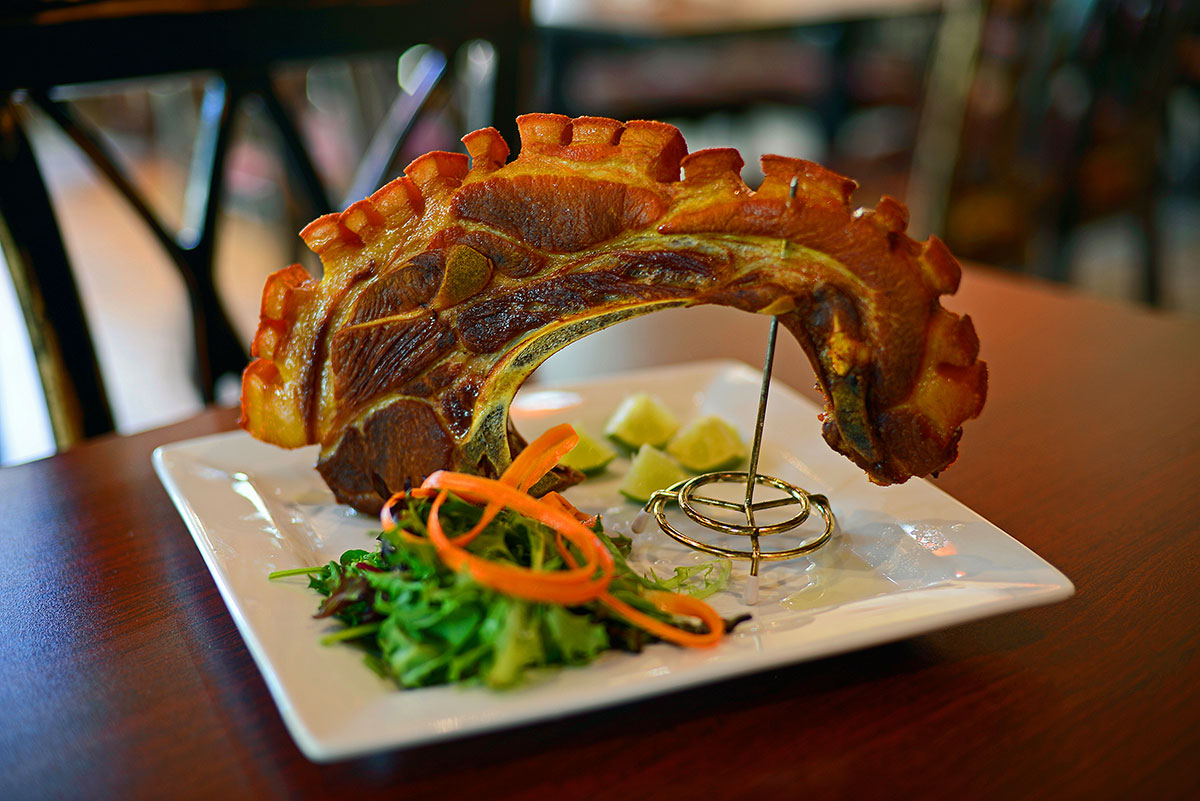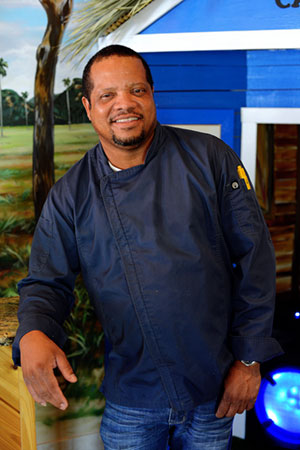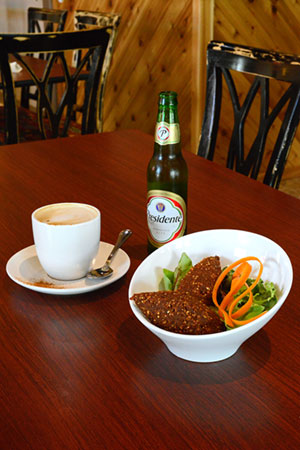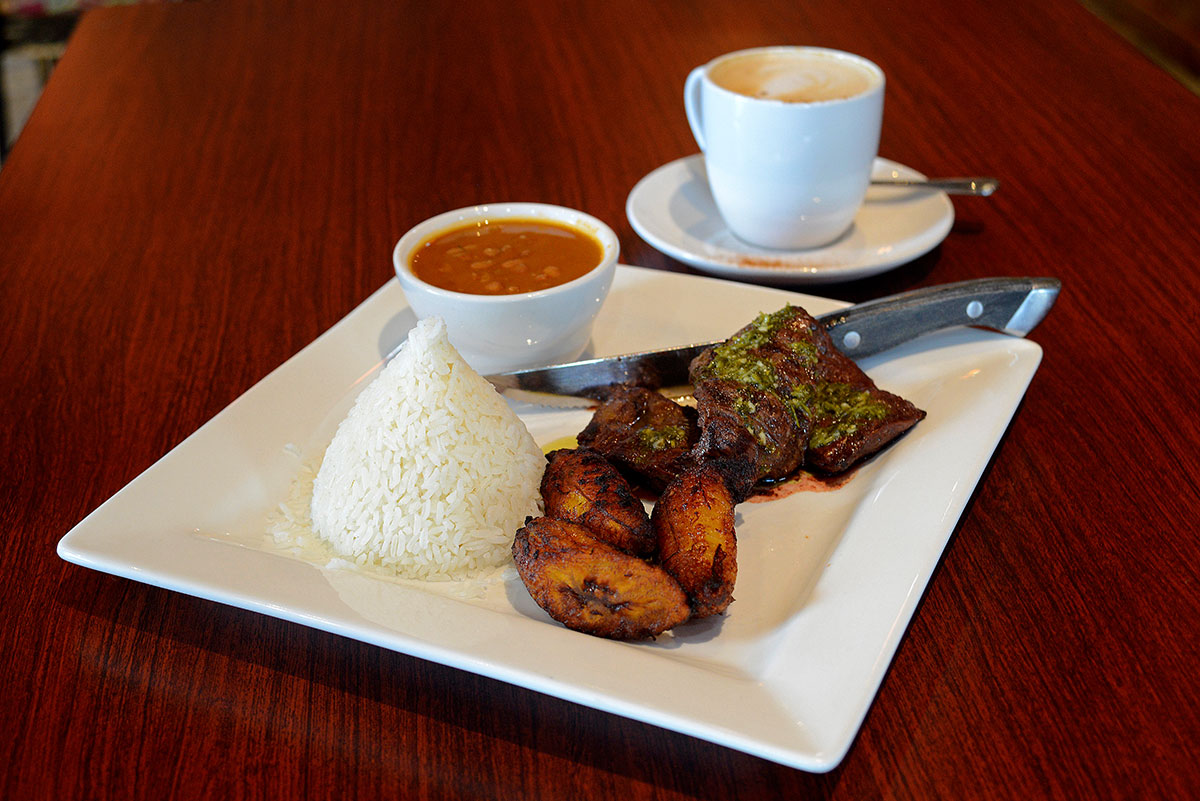CARIBBEAN FLAVORS


Dom Rico showcases traditional Latin cooking by blending two popular island cultures
BY RACHEL CUCCURULLO

Refined and affordable Latin food has made its way to Port St. Lucie in the form of Dom Rico Cafe. The task to fuse the flavors of two Hispanic countries in an area that had not previously seen such a combination was a bold move. But Dom Rico’s opening has been well-received by the community.
Since his start in the food industry in 1993, Rafael Sarzuela dreamed of opening his own restaurant. He moved from the Dominican Republic to New York City at age 22 and was employed at several large restaurants, working his way up from dishwasher to chef. During his time with the eateries of the Big Apple, Sarzuela said he worked hard to be the change behind the scenes, always willing to learn more and put forth 110 percent of himself.
An immigrant with a family to support, he was unable to find time and resources to attend culinary school. At one point, Rafael was working seven days a week in restaurants, landscaping or other odd jobs.
After he moved to Florida and met his wife, Vicky, she finally convinced him to attend the Lincoln Culinary Institute in West Palm Beach where he graduated in 2010. “I had the support of her and her family, which got me to the point to start being able to save and plan for our restaurant,” Sarzuela says. “This is over six years in the making. It didn’t just happen overnight.”
Sarzuela wanted to combine the two flavors and cultures he knew best: Dominican, his side, and Puerto Rican, his wife’s. “Both cultures are very flavorful and full of life,” he says. “My goal is to showcase both countries’ dishes.”

INVITING AMBIANCE
The casual but inviting environment puts diners in a comfortable and cozy mood. A goal of the Sarzuelas was to make everyone feel as if they were being welcomed into their own home for a special meal. The décor resonates with that of a countryside cantina amid warm lighting, lively music and an open-air kitchen.
Patrons are greeted upon entrance and given genuine, individualized attention from either Rafael or Vicky, or one of the wait staff.
“We want people to know that we are making every dish with passion,” he says. “I want them to enjoy themselves and taste the flavors of my home.”


Dominican cuisine draws its inspiration from a combination of cultures: Spanish, Middle Eastern, African and the indigenous Taino of the Caribbean. Puerto Rican food resembles Dominican food and that of neighboring Latin countries.
Sarzuela uses recipes he learned from his mother in the Dominican Republic and adds some Puerto Rican flair, or vice-versa.
He maintains the philosophy of supporting local businesses by purchasing fresh foods almost daily. To Sarzuela, it’s not so much about the money, but rather his love of cooking. He aims to put out dishes that are perfect every time. “I would never serve a dish that I would not eat myself,” he says. “I encourage and remind my chefs to think in the same way.”
Although many of the dishes at Dom Rico are curated from a more simplistic set of ingredients, combining them with Latin herbs and spices makes for an incredibly savory meal. Mofongo, originally of Puerto Rico, has become a flagship dish with Dominicans. Sarzuela fries green plantains and creates a particularly stand-out dish at Dom Rico. The aptly named “tri-fongo” is a grouping of yucca, sweet plantain and green plantain. Sarzuela manages to keep the inside incredibly moist but crispy at the same time, a feat in itself. Mofongo is always served with a traditional garlic sauce.
“You must always eat mofongo with the garlic sauce,” he says with a smile.
One of his favorite house-specialty dishes is the “mofongo de churrasco,” a juicy skirt steak served with a bright and tasty chimichurri sauce. All entrees are served with rice and beans and either plátanos maduros or tostones, both prominent side dishes in the Dominican Republic and Puerto Rico.
The “chuleta kan-kan” is a popular dish with a presentation that embodies Puerto Rican flavor. It is a magnificent display of a double-loin pork chop with pork belly, rib meat and chicharrones (fried pork skin) still attached. The pork is marinated with cilantro, oregano, vinegar, onion, paprika and garlic, along with other indigenous ingredients. The entire cut of meat is deep-fried, creating its signature crunchy bite, a huge hit among diners.
The menu also maintains two traditional dessert plates, tres leches and flan. Both are made in-house and have long been quite popular for both the Puerto Rican and Dominican cultures. The flan is a perfect individual serving size with a flawless, creamy texture.

arroz con habichuelas (rice and beans).
ISLAND DRINKS APLENTY
Aside from your usual bar suspects, Dom Rico offers an array of jugos naturales (fresh juices), batidas (milkshakes/smoothies) and other specialty drinks. On both islands, fresh fruit juices are staples. At Dom Rico, guests can choose from passion fruit, pineapple or guava.
A particularly popular Dominican beverage made at Dom Rico is “morir soñando” (to die dreaming). The mixed drink is made from fresh orange juice, sugar, evaporated milk and crushed ice, resulting in the taste of an American creamsicle. It’s refreshing and transports you to sweet summer days on the beach.
Sarzuela enjoys incorporating unique wines to pair with his dishes. The latest is a grapefruit wine that is the right amount of tangy and sweet to couple well with fish, chicken or chicharonnes.
As is traditional in Hispanic culture, restaurant-goers can close the night out with a rich café con leche (coffee and milk).
If you are in search of a welcoming atmosphere that creates superbly savory Latin dishes, Dom Rico is a good bet. Each dish is prepared with fresh ingredients, meticulous care and true passion.
See the original article in the print publication
IF YOU GO …
What: Dom Rico Cafe
Where: 1180 S.E. Port St. Lucie Blvd.
Hours: Lunch and Dinner, Sunday 11 a.m. – 9 p.m.
Tuesday-Thursday 11 a.m. – 9 p.m.
Friday-Saturday 11 a.m. – 10:30 p.m.
For more information and reservations:
Call 772-204-2318
Website: www.domricocafe.com